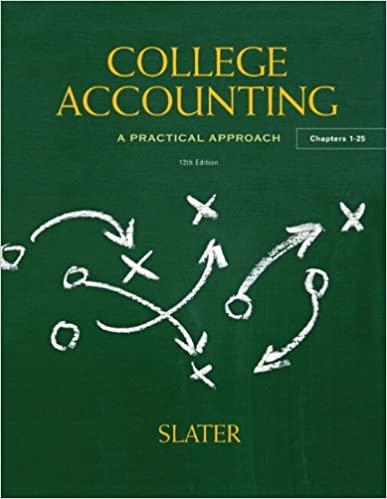A convenience store? asked Stan, incredulous. Yep, a convenience store, replied Carrie Zabrinsky, or, as they say
Question:
“A convenience store?” asked Stan, incredulous.
“Yep, a convenience store,” replied Carrie Zabrinsky, “or, as they say in the business, a c-store.”
Stan had arranged a meeting with his Subway development agent, Carrie, to discuss expansion of his Subway franchise to another location. His future partner, Ron, was almost through with his training program at Subway University, and Stan had just promoted his Sandwich Artist, Rashid, to manager. By leaving a lot of the day-to-day operations in Rashid’s hands, Stan planned to help Ron open the new Subway. Everything seemed to be going according to plan, yet he hadn’t bargained on the new location being in a Pitt’s Stop convenience store!
“Stan, just hear me out,” Carrie insisted. “That site you have your eye on is extremely expensive. Also, with nothing around it but that new luxury apartment complex and some very upscale shops, it won’t generate the foot traffic you need.
This c-store, however, is in a prime high-traffic location.”
“But the square footage is so small,” Stan protested, pointing to the floor plan in front of him.
“Listen, Stan, in the fast-food industry, Subway leads the pack in opening nontraditional units. We have more than 3,700 Subway restaurants in c-stores, airports, gas stations, schools, grocery stores, and even in hospitals. Headquarters wouldn’t encourage these arrangements if they weren’t highly lucrative. Sure, these smaller units typically generate less revenue than a full-size restaurant, but they’re also cheaper to build and maintain. Look at the figures: Opening in a c-store typically costs as little as $30,000 to develop, while the traditional venue is more like $66,000.”
“And you’ve got a captive audience, I guess,” admitted Stan, “particularly in hospitals and schools. What I would’ve given to eat a sweet onion chicken teriyaki sandwich instead of that stuff that passed for food in high school!”
“Now you’re getting the picture,” Carrie smiled. “Just imagine. You go into the c-store at 10:00 P.M. to buy a quart of milk or some batteries and then you smell fresh-baked gourmet bread. Your stomach growls and you buy a Subway 6-inch.”
“Okay, okay,” Stan said. “Once I get some figures for the lease and fi nd out more about this Pitt’s Stop’s business and its management, I’ll run it by Ron. I’m not sure it is what he had in mind when he quit his job to own a Subway.”
“Well, he had profits in mind, didn’t he?” asked Carrie.
Discussion Questions
1. How might opening a Subway in a convenience store reduce expenses?
2. How might this arrangement increase sales? Suppose you’re Stan’s development agent and you want him to open a Subway in a gas station. How would you sell him on this arrangement?
3. Like all corporations, Subway’s goal is to increase earnings per share.
How does expansion into nontraditional sites help achieve this goal?
Step by Step Answer:

College Accounting A Practical Approach Chapters 1-25
ISBN: 9780132772068
12th Edition
Authors: Jeffrey Slater





